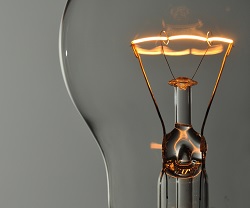
Damianos Soumelidis
 Fast progress calls for fast solutions, especially from IT. Small miracles are supposed to be achieved with shrinking budgets, traditional tools, and classical approaches—miracles for which, without a unique visionary design image, one waits in vain.
Fast progress calls for fast solutions, especially from IT. Small miracles are supposed to be achieved with shrinking budgets, traditional tools, and classical approaches—miracles for which, without a unique visionary design image, one waits in vain.
Business models need to consider departments that will be responsible for their implementation over the long haul, namely IT. Nagarro makes the best use of various innovative technologies and brings its comprehensive industry, technology and project experience into play. It has created a framework that supports CxOs in their innovation and transformation process.
Here are some tips that support innovation design:
Set up an innovation platform
In everyday life, there is little room for looking at things from new perspectives. Customer journeys, interdisciplinary co-creation, generation of ideas, "out-of-the-box" working phases, and prototyping have been used for many years in various fields of innovation design. In the UK, the proof of an innovation design process is even a pre-requisite for government tenders. This is done to put innovation on the agenda by creating an interdisciplinary ecosystem.
Get business units on board
The input from business units is valuable in several respects—you gain knowledgeable resources, but the invitation to co-create also ensures support during the implementation. Together with other assignments, the steps of a process such as evaluation, design task definition, or idea creation can also take place. The innovation task, which IT derives from the above mentioned steps, is well-founded and pursues business goals.
Fail forward
Transformation does not take place on a flipchart. Developing many good ideas means that not all of them will be implemented or will work out. Therefore, it is important to define pilots and prototypes and to plan missions within a reasonable framework. In an agile innovation process, it is also important to integrate new findings on a continual basis.
Innovation, but grounded in reality
Innovative design is not an end in itself but a superordinate target image that serves as the preparation for concrete projects. Starting from the status quo, the conversion phases must be defined and realistically clocked. For this, it is always important to take industry-specific technology trends, current market developments, and project synergies into account.




